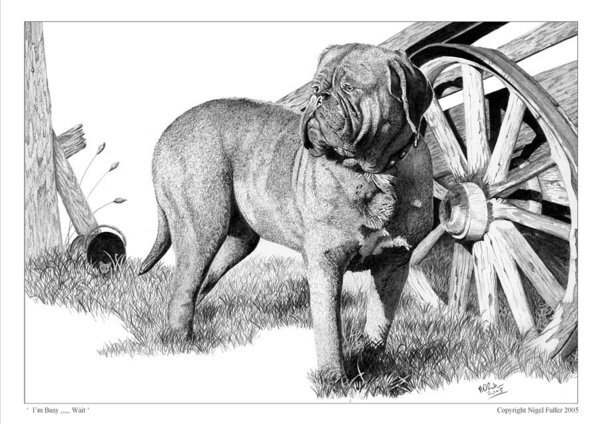
A Dogue De Bordeaux is regarded as a brachycephalic molossoid type of dog whose skull is wider than high. Its size is described by the breed standard as simply being “large.” Time and time again, however, we come across statements that indicate that proportionally speaking, the head of the Dogue de Bordeaux is the largest on any breed of dog, and we’d love for Dogue owners and breeders to confirm or refute this for us. Anyone?
The Dogue’s head is a reasonable segue into a question that a team of researchers at the University of Sydney had about heads, and whether a dog’s body size and head shape could predicted its behavior. To find out, they undertook a massive study involving 67,368 dogs from 45 different breeds over eight years at 235 testing sites in Sweden. They used a standardized behavioral test (the Dog Mentality Assessment Test) involving 10 different subtests designed to measure a dog’s aggressiveness, defensiveness, playfulness and sociability, fearfulness, chase instinct, and curiosity, etc. by testing their reactions to things like odd sounds, loud noises, mannequins that come out of nowhere, etc.
Researchers were interested the height and weight of the dog, but especially in the shape of the dog’s head which has a lot of variability in among dog breeds. They determined the dog’s head shape by using the “Cephalic Index,” which measures the skull at its widest point, then multiplies it by 100 and divides the result by the maximum length of the skull. There were, of course, more measurements and calculations taken, and you can read the full report in in the journal PLoS ONE, but in a nutshell, they found that a dog’s height predicted a number of behavioral tendencies (shorter dogs were found to be generally more aggressive than taller dogs who tended to show more affection, cooperation, and playfulness with humans), and that weight was also an indicator: Heavier dogs tended to be more curious, bolder, and attentive, while lighter dogs tended to be more fearful and cautious.
But getting back to heads, the researchers found that brachycephalic dogs (like Pugs or Frenchies) seemed to be more engaged with their owners and had a higher interest in human-directed play, but more defensive when faced with a difficult to interpret situations, while dolichocephalic dogs seemed less inclined to participate with object play, especially with people they didn’t know. These longer headed dogs weren’t as easily startled, however, and recovered more quickly when something unexpected came at them. The ultimate conclusion was that yes, a dog’s height, weight, and head shape can predict certain temperament and behavioral aspects. As for the Dogue De Bordeaux, we think this means that the breed is super smart, playful, discriminating and loving. That’s what we think.
“I’m Busy Wait” by Nigel Fuller is available as prints here.
